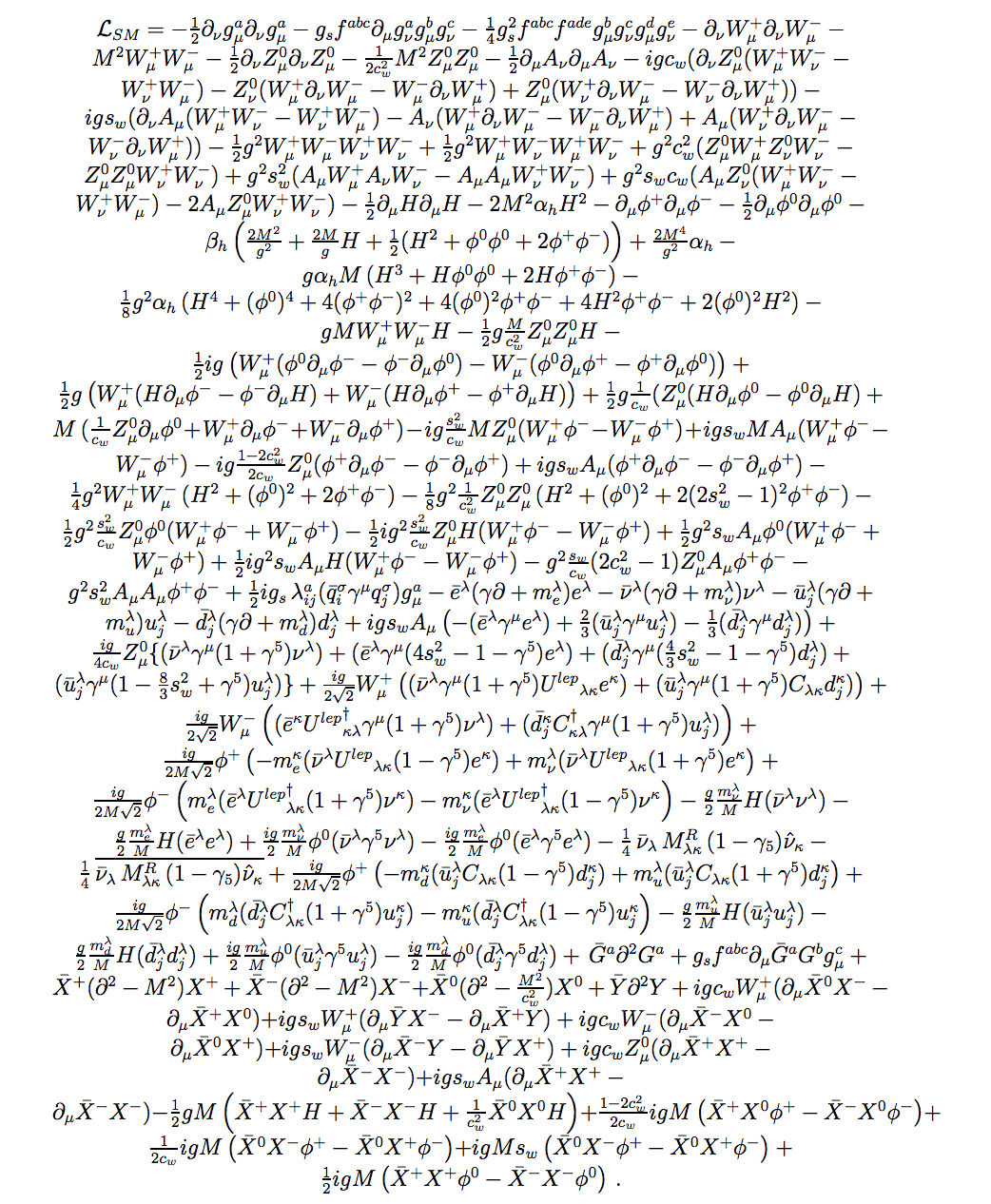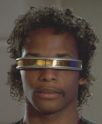|
DrSunshine posted:Still, if I'm observing something that displays behavior that should be physically impossible, like breaking thermodynamics or known laws of motion, I have two options: discard our knowledge of existing physics and assume it's alien technology that's using physics so advanced that it proves all our physics knowledge wrong, or discard my observation on the grounds that there must be something faulty with my measuring tools, or that there's some factor that my measuring tools aren't measuring. Just to be clear, the issue I have is jumping from "it can't behave in a way that we understand to be physically impossible" to "it's a weather balloon." The first statement is fine. The second one isn't based on any evidence at all, and it requires people to completely discount statements by numerous trained observers. I don't think any of this stuff is aliens, I just dislike the weird impulse of internet skeptics to assign a definite explanation to events that don't necessarily deserve more than a shrug. You can argue against certain aspects of a sighting being unrealistic or impossible without then assigning your own unverifiable explanation.
|
|
|
|

|
| # ? May 26, 2024 06:30 |
|
WAR CRIME GIGOLO posted:True heat death doesn't exist, black holes live untill 10 2400 years iron stars would epoch at about 10 to 2400 years. Also black holes can be fed pretty small amounts of matter and still survive dependent on size. The smaller the hole the less matter required to keep them alive. Holes can also live under for a very long time. Black holes would be the last safe haven of hyper intelligent life in the event of a star epoch. About 30 pages ago I linked a numerical idea of matter to energy ratio for black holes, but 1kg of matter annually could keep a micro society alive inside a computer for "ever" and ever in universe terms is a few hundred trillion years at the least. That's still a finite amount of time.
|
|
|
|
typhus posted:That's still a finite amount of time. Universally finite is a pretty relative term, this is all dependent on physics we have yet to discover. I mean even sizes of the universe are changing in terms of how we see things, 10^2400 is pretty close to infinite in relative terms.
|
|
|
|
Yeah but once the last living thing dies then the difference between the heat death taking 10 years or 10^10^10 years becomes meaningless. It's just a theoretical question about the end of the universe, you can't really make an argument about it being practically infinite if it's not a practical question.
|
|
|
|
Classon Ave. Robot posted:Yeah but once the last living thing dies then the difference between the heat death taking 10 years or 10^10^10 years becomes meaningless. It's just a theoretical question about the end of the universe, you can't really make an argument about it being practically infinite if it's not a practical question. i mean define Living right, is a virtual conscious inside a simulated city feeding 1 kg of matter to a blackhole slowly as the rest of the universe is frozen "living"?
|
|
|
WAR CRIME GIGOLO posted:i mean define Living right, is a virtual conscious inside a simulated city feeding 1 kg of matter to a blackhole slowly as the rest of the universe is frozen "living"? Seems like it beats the alternative...?
|
|
|
|
|
WAR CRIME GIGOLO posted:i mean define Living right, is a virtual conscious inside a simulated city feeding 1 kg of matter to a blackhole slowly as the rest of the universe is frozen "living"? Yes, but it's also a fantasy. I don't see what relevance it has regarding the heat death of the universe either way.
|
|
|
|
GhostofJohnMuir posted:how could the bugs accelerate an asteroid across the galactic disk? bad example, those morons also didn't believe plasma bugs could shoot ships in orbit, until they did typhus posted:Black holes eventually evaporate via Hawking radiation after some absurd number (10^100?) of years. Eventually, this will happen, as the Protons itself have a limited lifespan. The end game for the universe is some kind of homogeneous energy soup, stretching in all directions forever. All reactions stopped, all matter gone. A dark and silent world. Of course, since Proton lifespan is so long, we haven't yet found an indicator for Proton decay. However, until we found the Higgs Boson, we didn't know it existed either, so it's a bit weird to draw immediate conclusions from not having found proof of Proton decay yet. Classon Ave. Robot posted:Yes, but it's also a fantasy. I don't see what relevance it has regarding the heat death of the universe either way. It's not a fantasy if something like that actually exists.
|
|
|
|
WAR CRIME GIGOLO posted:Universally finite is a pretty relative term, this is all dependent on physics we have yet to discover. I mean even sizes of the universe are changing in terms of how we see things, 10^2400 is pretty close to infinite in relative terms. This line of conversation kicked off with the notion that black holes would "survive" the heat death of the universe. The point I'm getting at is that nothing survives the heat death of the universe--that's what makes it heat death. Up to and including black holes. There's nothing relative about infinity. Infinity is always an infinite distance away from a known quantity. The gulf between "basically forever", which can be expressed as an integer, and "forever", which can't, is an infinite sum. The second law of thermodynamics ensures that we will, after the passage of a finite amount of time, reach a point of maximum thermal equilibrium. typhus fucked around with this message at 16:19 on May 4, 2020 |
|
|
|
Libluini posted:Eventually, this will happen, as the Protons itself have a limited lifespan. The end game for the universe is some kind of homogeneous energy soup, stretching in all directions forever. All reactions stopped, all matter gone. A dark and silent world. As I mentioned earlier, proton decay is not a feature of the standard model. It is a feature of hypothetical GUTs. The standard model has been fantastic at predicting things. GUTs have been universally a failure at predicting things, even BSM-adjacent things like neutrino masses were not predicted by GUTs. I think the motivation to take GUT predictions seriously has taken a significant hit.
|
|
|
|
ashpanash posted:As I mentioned earlier, proton decay is not a feature of the standard model. It is a feature of hypothetical GUTs. The standard model has been fantastic at predicting things. GUTs have been universally a failure at predicting things, even BSM-adjacent things like neutrino masses were not predicted by GUTs. I think the motivation to take GUT predictions seriously has taken a significant hit. This may be a dumb way to ask this, but should the standard model have something to say about proton decay? Or is it just not the right tool for the job
|
|
|
|
Libluini posted:bad example, those morons also didn't believe plasma bugs could shoot ships in orbit, until they did No it's a good example, that film was satire, written by a holocaust survivor who hated the book so much that he didn't bother finishing it, and just set out to make fun of it. The first scene in the film shows them trivially destroying an asteroid. But then oops, here comes an asteroid cross-galaxy, now we need to really step up this war that unifies our idiot fascist society against these enemies that are both mindlessly weak insects whose land is there for the taking, and a cunning existential threat that will destroy Earth. What a coincidence. Brendan Rodgers fucked around with this message at 19:32 on May 4, 2020 |
|
|
|
Heck Yes! Loam! posted:This may be a dumb way to ask this, but should the standard model have something to say about proton decay? Or is it just not the right tool for the job Not a dumb question or a dumb way to ask it at all. I could go into detail if you want, but suffice it to say that the Standard Model in fact predicts that protons cannot decay, because there's nothing less massive they could decay into that would preserve Baryon number symmetry. As for it being the right tool for the job, we know the standard model can't be the end of the story, because it doesn't explain things we experience like gravity, and there are unresolved questions like where's all the anti-matter? But the question is, can we continue to find new theories using the methods we used incredibly successfully to devise the standard model (adding new symmetries of nature - this is the method currently used to build the so far unsuccessful GUTs) or is there something we're missing, and maybe the symmetry argument can only take us so far? No one has the answer to that question yet.
|
|
|
|
Anyone here watch Isaac Arthur on YouTube much? It's some pretty heavy physics but a good listen
|
|
|
|
WAR CRIME GIGOLO posted:Anyone here watch Isaac Arthur on YouTube much? It's some pretty heavy physics but a good listen I like what he does. I just have a hard time listening to his voice because it sounds too much like my own voice. I'd have binged watched all of them if he sounded like the narrator for Kurzgesagt. Very much the definition of a "Me" problem and I wish it didn't affect things.
|
|
|
|
Raenir Salazar posted:I like what he does. I just have a hard time listening to his voice because it sounds too much like my own voice. I'd have binged watched all of them if he sounded like the narrator for Kurzgesagt. There's so much of that though! There's tons of content most people can't bear because the people doing it are nerds and possibly not the best at formulating their opinion without rambling or mumbling. Especially in the higher sciences or concepts. I have an AutoCAD teacher on Udemy that had a very heavy Indian accent. He's an AutoCAD genius and teaches very well, but his accent is so hard to follow sometimes i end up skipping the content. Like you said a Me problem but an everyone problem really.
|
|
|
|
Heck Yes! Loam! posted:This may be a dumb way to ask this, but should the standard model have something to say about proton decay? Or is it just not the right tool for the job Ah, what the heck. Let's go deep. So, if you want to get into the nitty gritty of the standard model, itís important to know both what it says and how itís constructed. The most useful description of the standard model (for the purposes of calculation) is the standard model lagrangian. Here it is:  Ok, that looks bad. Real bad. But itís misleading, because thatís never used to calculate anything. In essence, that form is just writing out everything in the most naive way possible - itís also maddeningly obtuse and meant more as a quixotic exercise than as a way of expressing something. Math is, at its heart, a language, and a language should encode meaning to those who understand it. So, we can look at a compactified version of the SM lagrangian, which gives us something much more readable:  I donít blame you if that makes as much sense to you as the first one, but thatís because in order to make it so compact, a lot of mathematical machinery is used. These machines just squash big statements into nice little tiny ones. So, letís (very, very slightly) demystify the above equation. The first line describes interactions between vector boson fields. These are the standard force carriers, gluons, photons, W and Z bosons. The second line describes interactions between spinor fields (fermions) and their gauge bosons. (The vector bosons above.) The third line describes interactions between the vector boson fields and the Higgs (scalar) field, as well as the Higgs fieldís self-interactions. The fourth line describes interactions between spinor fields and the Higgs field, as well as antimatter. The nature of the above compactification loses some of the essence of how these things are actually calculated, and if you want to get into those things in greater detail, there are books aplenty. But what I just described is the best way to calculate with the standard model. However, I think the best way to think about it is in a slightly different way - as a collection of gauge symmetries. A gauge symmetry is one of those things that is just plain hard to translate into English without a lot of background, but Iíll give it a shot: Consider the following equation: 1 + 1 = 2 Letís say you have a big box, and inside the box is the above, very simple equation. Now, letís move that to the other side of the box. [ ___________________________ 1 + 1 = 2 ] Moving the equation to the other side of the box did nothing to change the equation. Itís invariant inside the box. Now, letís add a wrinkle. If I take the equation out of the box, we see this: 2 + 1 = 1 Immediately you can see that this is wrong. But, if you recognize how the transformation happened, you can account for it - letís say that moving inside or outside of the box reverses the orders of the numbers. So we can add a gauge symmetry to the transformation of moving inside or outside of the box that performs an operation that re-reverses the numbers. That way, we move it outside the box, then apply the gauge symmetry: 1 + 1 = 2 ---> [outside of box] 2 + 1 = 1 ---> [apply gauge symmetry] 1 + 1 = 2. Now we have a slightly different theory than we started out with, but itís one that is invariant under transformations that move it inside or outside of the box. Thatís a gauge symmetry. That example is very simple, but it gives you an idea of what these symmetries are. The ones in the standard model are more complicated symmetries that make the equations locally invariant. So even though the lagrangian formulation naturally evokes a global symmetry (turn the universe around and everything still works the same), the gauge symmetries allow for local invariance (change the phase of the wave function at some point in space and everything still works the same.) At the heart of the standard model is the gauge group SU(3) X SU(2)L X U(1)Y. [Pronounced: S U Three Cross S U Two Left Cross U One Hypercharge.] The SU(3) is the group that describes the transformations in color space (the strong force) and the SU(2)L X U(1)Y describes transformations in the electroweak force. This electroweak force is spontaneously broken by the Higgs mechanism, leading us to a different gauge group that we see at low energies (in everyday experiments): SU(3) X U(1)EM (Where EM is electromagnetism). It might be tempting to think that the Higgs mechanism just takes SU(2)L out of the picture and leaves U(1)EM , but itís more complicated than that, as U(1)EM is a linear combination of aspects of SU(2)L X U(1)Y, and the other linear combinations only manifest in collisions and decay. But whatís important for the topic at hand is that Ďdecayí part - by decay we donít mean Ďfall apartí in the colloquial sense, or even in the radioactivity sense. By decay, weíre referring to a set of operations known as Ďflavor changeí - and if you ignore the whimsical-sounding name, youíll find that the only force which allows flavor change in the standard model is the weak force. And it only allows flavor change between specific dublets - the up and down quark make up one such doublet, as do the electron and the electron anti-neutrino. And now, let's talk about the proton. The proton is a type of particle called a baryon, which is made up of three quarks. The intricacies of SU(3) make it such that any bound state is intrinsically colorless. That means that baryons canít split off into a meson (a two-quark bound state) and a free quark, because free quarks canít exist. Neither can free gluons. So once a baryon is formed, itís stuck being a baryon - unless it gets to combine with an anti-baryon of the same type. This will conserve its baryon number - the baryon has a number + 1 and the anti-baryon has a number -1 - and release its energy into the background, at which point it can take a bunch of different forms based on the total mass-energy of the combined collision (including energy from momentum). Thatís basically how particle accelerators work - smash particles into one another at high differential momentum, using that energy to create new particles and anti-particles which can annihilate and create more particles, etc. A proton is the lowest mass baryon - a neutron, which has a higher mass, can decay into a proton if it is in a free state. (Bound in a nucleus of an atom, a neutron has the same stability as a proton - as far as the SM is concerned, completely stable. But thatís another argument.) Baryon number in the SM is conserved. So protons canít decay through any mechanism described by the standard model. Theyíre stable. The SM has been a hugely successful undertaking (once this whole symmetry story was figured out and really placed on sound theoretical and experimental grounds) and has made one successful prediction after another. But there are still questions. If baryon number is conserved, as the SM implies, then baryogenesis (the creation of baryons in the big bang) must have created equal numbers of baryons and anti-baryons. But the universe has a quite noticeable bias towards baryons over anti-baryons in our observations - but not in our experiments with collisions. This is the problem of baryon asymmetry. Thatís one of many, many questions the standard model leaves outstanding - such as, what role does gravity play? What is this thing we call dark matter? The SM has been so successful with these symmetry arguments that theorists understandably leaned on those same arguments to come up with extensions and new symmetries based on those same principles. These BSM (beyond the standard model) theories generally involved invoking new symmetries, such as SUSY (supersymmetry, a proposed additional symmetry between fermions and bosons) and new, larger group structures such as SU(5) or E(8) X E(8) and others. Itís hard to get into why these were so attractive, but they seemed to provide deep answers and very Ďprettyí mechanisms that resolved a lot of problems with the standard model while predicting new particles that could easily account for dark matter, for instance. In those new theories, there are new ways for SU(3) to transform, and therefore protons should actually decay. These theories also predicted that at certain energy scales, the three forces would merge into a single force (just as the EM and Weak forces merge into the electroweak force at certain energy scales) - therefore these became known as GUTs, grand unified theories. Well, weíve found no evidence for any GUTs. None of the predictions of any of them have borne fruit. Weíve looked really, really hard. The nature of these theories means that we can never really count them out (they can be formulated in such a way as to explain them not being seen at currently accessible energies) but at some point the lack of evidence starts to speak louder than the arguments from beauty and simplicity. Perhaps the GUTs are just waiting for us to reach the next energy scale. But we also have to consider - and more and more theorists are coming to this line of thinking - that perhaps the standard model is the end of the road for theories based solely on symmetry principles, and we have to find something different.
|
|
|
|
WAR CRIME GIGOLO posted:Anyone here watch Isaac Arthur on YouTube much? It's some pretty heavy physics but a good listen Yep. And John Michael Godier and his interview show, Event Horizon. Great stuff. I found out how to get Isaac Arthur's show as a podcast and I wish I could get JMG's as a podcast as well. Zesty fucked around with this message at 00:40 on May 5, 2020 |
|
|
|
Ash, what do you think about the theory that our universe is way larger and we can only see a circular region of a much larger universe?
|
|
|
|
WAR CRIME GIGOLO posted:Ash, what do you think about the theory that our universe is way larger and we can only see a circular region of a much larger universe? That's very much the mainstream view of the universe based on our current cosmological model. I have no reason to doubt it. Though it should be noted that the spherical region we see and interact with is bound by a cosmological horizon; we can never interact with anything outside of that horizon, as events beyond that horizon are expanding away from us faster than the speed of light. This inability to ever interact with said events makes the existence of those events something of a philosophical question, ultimately.
|
|
|
|
I haven't tracked everything in the thread so, I don't know if this was already brought up. If you guys like Isaac Arthur but, want something with more science behind it, I would highly recommend PBS Spacetime.
|
|
|
|
I used to watch that channel... but it's so... boring? Needy with pop culture references? Same reason I dropped things like Physics Girl, MinutePhysics/Earth, and a couple others that aren't popping to the front of mind right now. They're the Ready Player One of science content. Here's a list of the spacey stuff on YouTube I really like right now.
Zesty fucked around with this message at 04:18 on May 5, 2020 |
|
|
|
Zesty posted:I used to watch that channel... but it's so... boring? Needy with pop culture references? Same reason I dropped things like Physics Girl, MinutePhysics/Earth, and a couple others that aren't popping to the front of mind right now. They're the Ready Player One of science content. PBS spacetime is better than most, but you aren't wrong. Sean Carrol has been doing a really good series on his channel called the biggest ideas in the universe.
|
|
|
|
PBS Spacetime delivers the deepest understanding of physics that an ignoramus like me can comfortably comprehend, presented with maximum efficiency. Event Horizon and Isaac Arthur are a little too fixated on stuff being aliens but have good guests when they have guests. PBS had an excellent math channel too that I liked even more than Spacetime, but it got shut down because too few people watched it and the mathematicians they got to host it were all on the tenure clock and couldnít do it full-time without losing their careers.
|
|
|
|
Also only tangentially related, but ComputerPhile has a bunch of content on superintelligent AI and the control problem, and Numberphile is just great for math content. I enjoy them more than PBS SpaceTime.
|
|
|
|
ashpanash posted:Ah, what the heck. Let's go deep. That's kind of dense, luckily for us laypeople we can ignore the standard model because protons are actually black holes and the strong force is just gravity, which we can verify with the standard model that we are decrying. Seriously though love the effortpost. I remember internet arguing with someone who supported the magic-rock selling charlatan from the link above for way too long. Seeing actual physics is quite cleansing after touching that poop.
|
|
|
|
Heck Yes! Loam! posted:This may be a dumb way to ask this, but should the standard model have something to say about proton decay? Or is it just not the right tool for the job You definitively cannot have protons decay in the standard model. They're stable because their baryon number is conserved. e; ashpanash's post gets into greater detail. 
|
|
|
|
WAR CRIME GIGOLO posted:Anyone here watch Isaac Arthur on YouTube much? It's some pretty heavy physics but a good listen Yeah he's great, will be checking out all the other suggestions in here too, thanks thread.
|
|
|
|
Welcome to the Space & Aliens thread, the thread where we shout down people saying UFOs are aliens, people saying that FTL could be possible, and people saying that space travel is impossible. 
|
|
|
|
Thanks for the really awesome effort posts. This thread gets some woo posts in it, but always adjusts course back to scientific standards. Are there any other completely stable quark combinations?
|
|
|
|
What's the general impression of Blue Origin's progress? As someone who doesn't follow things all that closely, it's hard to tell whether they're not getting anywhere or if they've just been far less public about their accomplishments/aims than SpaceX.
|
|
|
|
Blue origin is really far along in building its production and launch facilities, I'm pretty sure they've completely renovated one of the launch pads from the 60s the handle heavy-lift class booster rockets.
|
|
|
|
Heck Yes! Loam! posted:Are there any other completely stable quark combinations? There might be pentaquark states that are at least plausibly metastable (it's theoretically possible to make a colorless state in a pentaquark configuration) but we haven't found any yet.
|
|
|
|
Three Star Trek avatars in a row. In the Space thread? 
|
|
|
|
What's so cool is we have so many good study subjects in our solar system Jupiter Saturn And Mercuy are great for material sciences once we can do things with what they offer.
|
|
|
|
Metallic hydrogen is going to be the most
|
|
|
|
DrSunshine posted:Metallic hydrogen is going to be the most
|
|
|
|
WAR CRIME GIGOLO posted:Dude it's gonna be the Yeah that would be awesome. I'm kind of skeptical that it would be stable at room temperature though. If it was, wouldn't we have seen evidence of it already, thanks to it being ejected in supernovas and collisions and so on?
|
|
|
|
DrSunshine posted:Yeah that would be awesome. I am not a physicist, we have many in here who can correct me if im wrong, but these types of materials mature over millions of years and billions of Gs of atmosphere, whereas a supernova is a shorter burst of superheated matter that cools into larger than FE elements, Metallic hydrogen. Jupiter is a factory of Metallic Hydrogen, wheres a supernova may produce some but not a lot? (Unsure if correct) Here's a couple resources on Metallic Hydreogen https://www.youtube.com/watch?v=kV3FY4q1xjY (SciShow) He also has a nice long lists of "The Scientists didnt (Insert many things here)" due to the nature of the experiment,but goes on to say they will eventually release the vice to see if it stays solid. Heck Yes! Loam! posted:Thanks for the really awesome effort posts. I think everyone appreciates that, it's fun to discuss things that are far off, but it doesn't turn into a hell because there are is no one in here spouting about Nibiru and the Anunaki and losing their poo poo when anyone mentions we landed on the moon. Everyone here seems to have a respect for real science at the basis of every concept discussed. I don't think i've seen a single alchemy post in here so thats a big deal in terms of civil discourse. WAR CRIME GIGOLO fucked around with this message at 23:00 on May 5, 2020 |
|
|
|

|
| # ? May 26, 2024 06:30 |
|
The latest Isaac Arthur video is about life as a digital being. Interesting, if rather at the bounds of speculation.
|
|
|



























